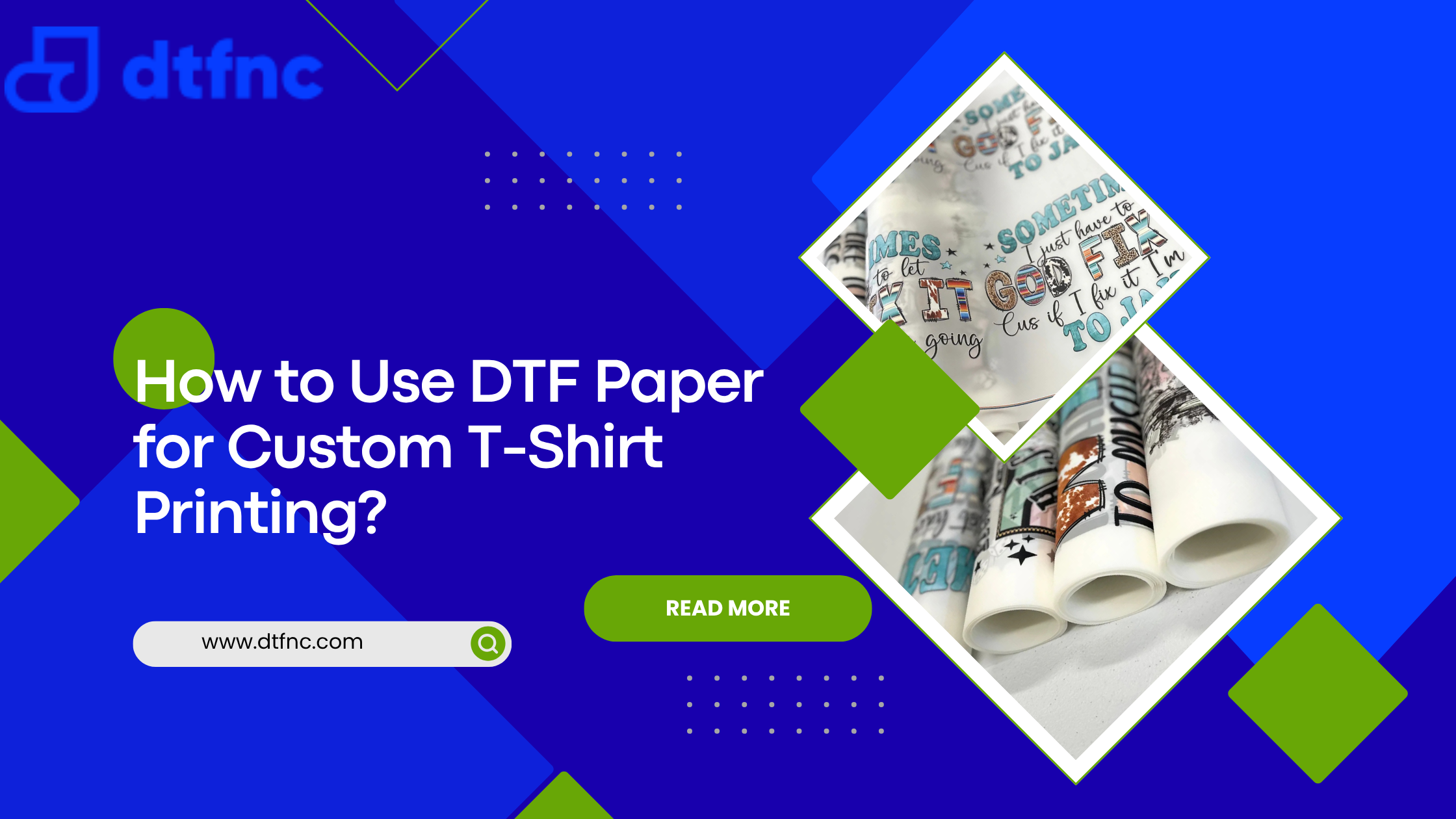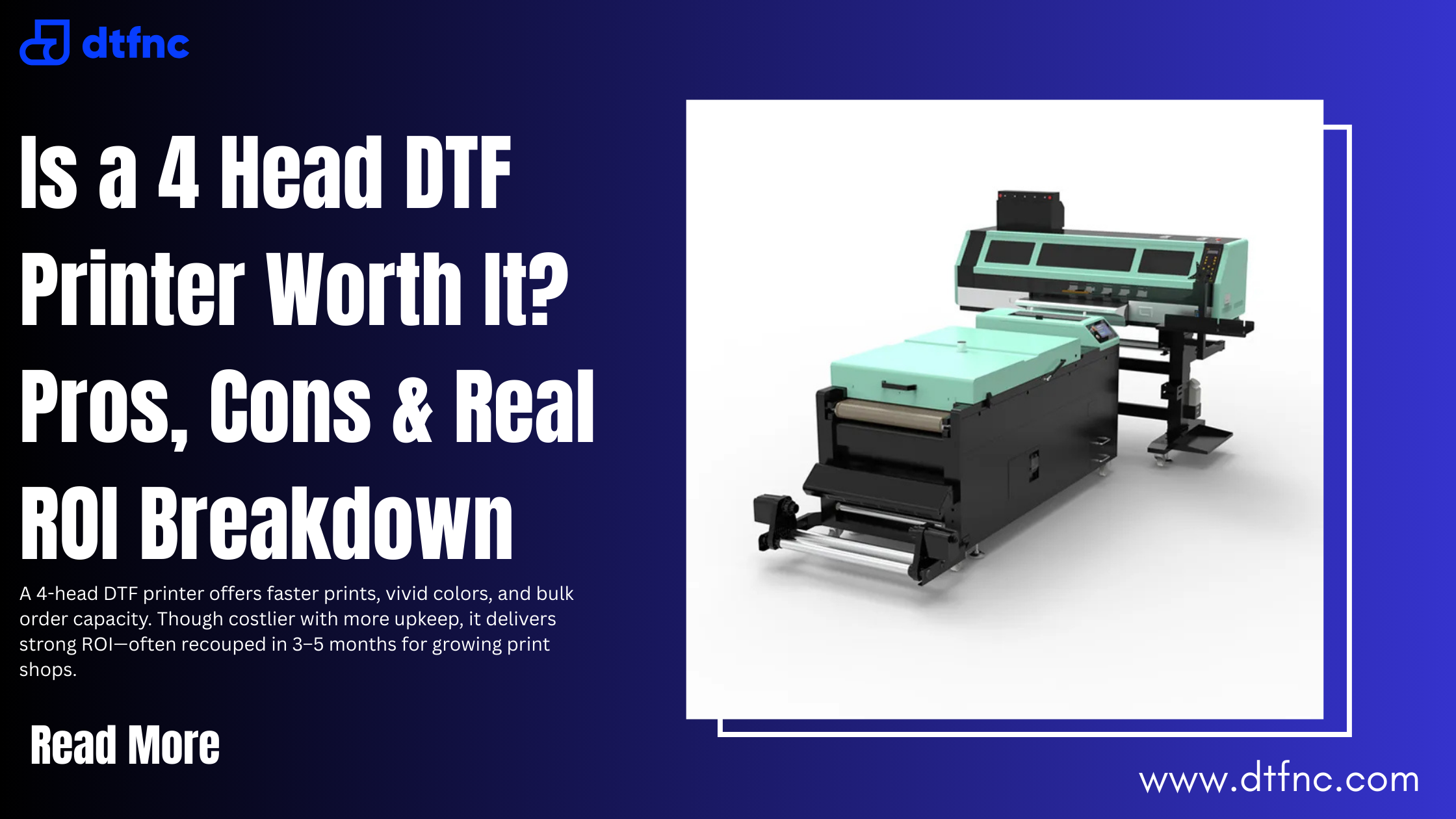One of the greatest advantages of direct-to-film printing is that it gives maximum flexibility and is done on numerous substrates to ensure vibrant prints. That said, one of the most important steps in this process would be the curing of DTF powder to ensure the durability of the print. The following blog will help you to cure the DTF powder with a heat press. It will include all the best heat press settings for the process and frequently asked questions.
Whether you're a seasoned pro or new to DTF printing, this guide contains essential information to get the best results.
Introduction to DTF Powder Curing
DTF powder curing is the most pivotal process in DTF printing, which often controls the durability and brightness of your prints. The powder is cured to provide the adhesive powder with melting for good bonding with the ink and the film, which later on will be transferred onto the fabric. Although there are other methods to cure the DTF powder, like using an oven or a heat gun, for example, curing the DTF powder with a heat press is among the best, if not the most efficient, ways to have consistency in the product.
Why is curing important? If the adhesive is not cured properly, it may not bond correctly, which will result in problems such as poor washability, peeling, or fading of the print. It is, therefore, important to understand the right techniques and settings so that quality DTF prints can be obtained.
Also Read: How to Put a Logo on a T-Shirt: Easy Step-By-Step Guide
Step-by-Step Guide to Curing DTF Powder with a Heat Press

1. Preparing the Heat Press
First, set up your heat-press, then initiate the curing. It helps to set the proper DTF heat press settings for desired results. You need to set the temperature range first on your heat-press to 320°F - 350°F, depending on the type of press you use and the specific DTF powder recommended. It is always advisable to work with a swing-away heat press as it evens out the pressure.
Also Read: How to Design DTF Transfers: A Complete Guide
2. Placing the DTF Transfer Film
Position the DTF transfer film, having the already printed design and a layer of adhesive powder, on the bottom plate of the previously set heat press. Let the power side face up, and the film surface lay flat without having any wrinkle impressions on it.
3. Curing Process
Next, lower the heat press on the transfer film. Do not apply full pressure at this stage. You're not pressing on the film but letting it heat through to cure the powder. Curing DTF powder with heat press usually takes 60-90 seconds. The adhesive powder melts and bonds to the ink during that time to form a highly solid adhesive layer that is going to stick to the fabric later.
4. Cooling Down
Following the curing procedure, slowly lift the heat press and allow the DTF transfer film to cool down. The film needs to be completely cooled for it to be pressed onto the fabric using iron so that the adhesive is set appropriately.
Also Read: 10 Best T-Shirt and Ink Color Combinations to Try
Choosing the Right Heat Press for DTF Transfers
When selecting the best heat press for DTF, consider factors such as temperature control, pressure adjustment, and the size of the platen. Swing-away heat presses are often preferred for DTF because they offer better access and ensure even pressure distribution. Additionally, a heat press with digital temperature and time controls can help you achieve more precise curing results.
Curing the DTF powder is always essential with a heat press to ensure that the DTF transfers one makes are hard-wearing and vibrant. Proper curing of the adhesive through proper DTF heat press settings will deliver bright, wash-fast prints. When you're an absolute beginner in DTF printing or want to fine-tune your process, the key to professional results every time lies in subtleties when curing with a heat press.
Ready to take your DTF printing to the next level? Explore our range of high-quality DTF powders, heat presses, and other essential supplies at DTFNC to ensure your prints come out perfectly every time.
Explore Our Collections
4th of July | Halloween | Juneteenth / BLM | LGBTQ | National Parks | Retro States
FAQs
1- Can you use a heat press to cure DTF?
Yes, you can use a heat press to cure DTF powder. It's one of the most reliable methods that ensure homogeneous curing and a strong bond between the powder and the ink.
2- What temperature should DTF be curing?
The temperature to cure the DTF powder using a heat press will be in the range of 320°F to 350°F. However, for more precise temperatures for the powder you are using, always refer to the manufacturer's instructions, as there might be some slight temperature variation that would get different powders perfectly cured.
3- Can I cure DTF powder with a heat gun?
Yes, you can cure DTF powder with a heat gun; however, it is much more difficult. Compared to the heat press, the heat gun enables one to apply heat much more focused on the area, but it may be tricky to hold up a correct temperature and cure the whole design equally. Keep the heat gun between 300°F and 350°F, constantly moving the gun over the transfer so that no single area will burn.
4- What is the best heat press setting for DTF?
The best heat press setting for DTF curing will typically be around 320°F to 350°F, based on a time of 60-90 seconds.









1 comment
kamrxfhvuw
Muchas gracias. ?Como puedo iniciar sesion?